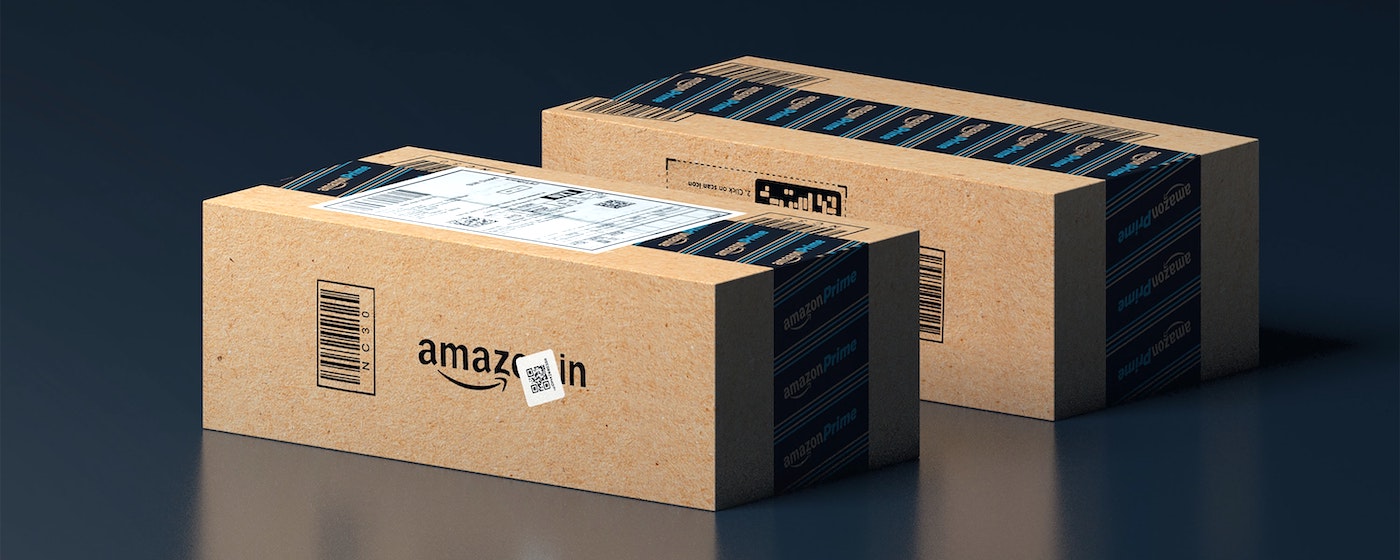Table of Contents
** Minutes
What are Shopify analytics and how do you access them?
Different types of Shopify reports and metrics
How to measure customer loyalty
Strategies that boost customer loyalty
The ecommerce world loves the next new thing — with one exception. Old customers come with benefits that outweigh new ones (well, the cost of acquiring new ones). Finding new customers is more expensive than turning current customers into repeat buyers.
Data collected by Forbes says, 80% of your future revenue comes from 20% of current customers. Building loyalty is the key to longevity, so if you’re looking for long-term revenue, you’ll want to boost customer loyalty and lock in long-term customers.
Knowing how customers interact with your Shopify store can help you make smarter business decisions. Understanding your key performance metrics, sales data, site performance, and channel efficiency will uncover meaningful insights about your business and customer loyalty.
Read on to answer:
- What are Shopify data analytics? Find out which data points matter and how to access them.
- What are different types of Shopify reports and metrics? Learn which ecommerce metrics you should prioritise, and why they matter to the overall health of your store.
- How do you measure customer loyalty? Note which key metrics to keep a pulse on.
- How do you boost customer loyalty? Scale your business by implementing strategies that serve your existing customers.
Let’s dive in!
What are Shopify analytics and how do you access them?
Analytics tools help ecommerce operators understand how their business is performing — and shine a light on how to improve.
Understanding your Shopify analytics allows you to understand:
- Who your customers are
- Which products sell best
- What marketing channels to invest in
In order to access your ecommerce analytics, Shopify store owners can use Shopify’s built-in data reporting dashboard to see transaction and customer data. Advertising data lives on Google, Facebook, TikTok, etc. Email marketing and SMS data will live within your marketing platform.
That’s a lot of siloed data to keep an eye on, right? To get a consolidated, high-level snapshot of your store’s overall performance, including all your data sources, try Tydo’s free, customisable dashboards.
Once you collect and measure your data points, you’ll be in a better position to make marketing decisions that boost customer loyalty.
Different types of Shopify reports and metrics
To set a foundation for understanding your data, we recommend focusing on four ecommerce metric collections. Consider these stats your new best friends and visit them often! These metrics will help you understand how your business is performing as a whole.
1. Key performance metrics
Key performance metrics illustrate a high-level overview of the basics, with predictable trends. Daily spikes can signal that your marketing efforts are working, while dips can flag any issues or gaps.
Keep an eye on:
2. Sales data
Monitor your sales reports to get an idea of where revenue is coming from. Be sure to:
- Compare your current sales to previous sales periods (look at specific time frames to draw correlations)
- Map your highest-performing products to your sales (by units or by dollars) to discover your bestsellers
- Understand the percentage of first-time and repeat orders driving sales
3. Site performance
Discover who is coming to your site and if they are converting to customers. Low checkout conversions could signal that you’re not driving qualified traffic to your site. In order to optimise store conversions, keep an eye on:
Another key insight you can gain from evaluating site performance is whether or not there are any glaring discrepancies in your store. For example, if you see a big dip in orders or conversion rate, part of your tech stack might be broken. It happens — more than we like to admit!
When monitoring your Shopify data analytics, ask yourself:
- How many orders are being placed?
- Is your traffic converting?
- If you add a new marketing channel, is it bringing in qualified traffic?
- Can you optimise the experience through customised landing pages?
4. Channel efficiency
Then there’s channel efficiency, or what we like to call the “prove it” point. This is where you get to prove that your paid efforts are making an impact! In order to show which sales channels are driving the highest ROI, zero in on:
- Ad spend (total and per-channel)
- Conversion by medium
- Channel performance: ROAS, CPA, and attributed sales
How to measure customer loyalty
Getting a good look at your Shopify data is tricky, but essential to scaling and making smart decisions. It costs more to acquire a new customer than to re-engage a current one. Focusing on strategies that serve existing customers is an ideal way to scale. Find growth by targeting these advanced metrics:
Repurchase rate
This number shows the percentage of your current customers that have purchased at least a second time, over a given timeframe. This metric is a good indicator of the value you’re providing customers. Customer cohorts are an effective way to analyse repurchase rate, as cohorts allow you to analyse a customer’s behaviour over time.
Net promoter score (NPS)
Research shows that happy customers tell nine friends about their experiences with a brand. Guess how many friends an unhappy customer tells? Sixteen! Utilise your NPS to uncover which of your customers are unhappy and at risk of churning — and implement a marketing strategy to show them you care.
You can also use NPS data to identify brand evangelists and incentivize them to promote your brand. Data collected from NPS surveys are also an excellent source of social proof.
Customer lifetime value (LTV)
If you typically focus on sales and revenue to measure your online store’s success, you’re not alone. These metrics provide a great gauge of short-term performance — but they don’t necessarily indicate the future success of your business.
Customer Lifetime Value estimates how much value (typically revenue or profit) a customer will bring to your business over the course of their entire relationship with your brand. This lets you pinpoint exactly how valuable an individual customer is to your business (and how much you should spend to acquire new customers).
Average customer acquisition costs (CAC) are between $127 and $462; A good LTV/CAC ratio is 3:1. Calculate both of these numbers in order to build more efficient marketing campaigns, and fine tune your budgets.
Strategies that boost customer loyalty
Increasing repurchase rate is a core goal of retention marketing. A high retention rate signals high quality products and services, a strong marketing strategy, and confirms that you’re targeting the right customers. High retention will also lead to recurring revenue and higher AOVs.
Need a benchmark? Increasing your Shopify customer retention rate by 5% can increase your profits by 25% to 95%.
Here are three strategies to help improve your retention marketing efforts:
1. Encourage repeat orders and subscriptions
Let’s say you make a new friend, and they immediately ask you to join their club. Tough sell, right? You’d probably want to hang out a few times, before making the long term commitment.
We have a similar perspective on subscriptions. You probably want your customer to get to know your brand, and experience your product before committing to a subscription upsell.
One “light touch” way to secure a repeat customer? Encourage them to simply repeat their order.
After a customer’s first purchase, it’s all about convenience. They’ve already researched and picked their product — it’s up to your brand to save their order and personalise a repeat order experience.
Service providers like Repeat make it easy for customers to simply buy again. Order reminders can be sent via email or SMS to customers when they’re most likely to be running low, and offer a one-click reordering experience. It’s an ideal solution for customers who aren’t ready to subscribe, but don’t want to run out.
You could also include a scan-to-reorder QR code on your packaging and direct mail, and into shipments as inserts. Customers can scan and reorder in seconds, without downloading a new app or creating an account.
Bonus? Scan-to-reorder custom QR codes are rich with data! You’ll get product-level insights and repeat purchase behaviour, so you can make better decisions on how to build your marketing campaigns in the future.
Ready to pull the next growth lever?
Once you’ve secured a repeat customer, offering a subscription can be a power source of locking recurring revenue and loyalty.
2. Prioritize engagement and customer service
How’s your brand’s customer service? The stakes are high. 33% of customers will consider switching brands after one negative experience.
Positive customer service interactions motivate customers to promote their favourite brands. Try taking a proactive approach to customer service to strengthen your relationships.
- Ask customers for feedback
- Add live chat to your store (turn questions into sales!)
- Create content that answers common questions
- Listen to what customers say about your brand online
- Admit to mistakes
“At the end of the day, customers just don’t buy from brands anymore. They buy from relationships with real people.”
Alex McEachern, Head of Marketing at Repeat
3. Invest in building community
Strong brand communities don’t just appear. You have to invest if you want to feel the impact.
The co-founders, immi, built a community of thousands before launching — and acknowledge that building a community isn’t just about amassing a giant email list.
“A true community is very different from an audience in that community members are engaged with each other. It’s not just a one-way relationship or even a two-way relationship between the brand and the audience. It’s a three-way relationship where it’s brand, audience, and then the audience speaking to other members of the audience,”
Kevin Lee, Co-Founder of immi
7 tips for building community:
- Pick a space where your community will live.This is your content hub, and could be a social media platform. For immi, Facebook was homebase. “Once we figured that out, we would take people on our email list and we had a drip sequence and all the calls to action were to join our Facebook group,” says Lee.
- Use all of your marketing channels to drive your audience to community pages.
- Start conversations, and let the community take over the dialogue.
- Build in public and give your community insight into your process.
- Ask for feedback. Use polls, focus groups, 1:1’s, and observe conversations.
- Encourage (and amplify) user generated content.
- Be authentic and quick to respond.
How can Tydo and ShipBob help with my Shopify store?
ShipBob partners with dozens of ecommerce platforms commonly used throughout the Shopify ecosystem, including Tydo. By utilising ShipBob and Tydo, brands can see shipping data alongside analytics reports. To connect with the ShipBob team and get started with ecommerce fulfilment, click here.
“I’m proud of our tech partnerships. In addition to ShipBob, we’re primarily on Shopify Plus and use several apps for other features. ShipBob’s software directly integrates with Shopify, so our orders are automatically processed and forwarded to the fulfilment centre closest to each order’s destination.”
Aaron Patterson, COO of The Adventure Challenge
The power of Shopify data analytics with Tydo
How many apps are in your tech stack? Shopify estimates that the average merchant uses six apps to power their store. Tydo consolidates your data, across apps and integrations, giving you a single source of insight.
Current analytics solutions are expensive, lack customisation, and aren’t built for every store’s unique needs. Tydo’s built as a modular platform, and provides a single space to build a unique playbook for your ecommerce business (plus it’s free to get started, regardless of your Shopify plan pricing).
Featured products within Tydo’s Platform:
- Store Overview: This overview dashboard gives a-high level snapshot of your store’s performance. Go from insights to action, fast! Monitor sales data, site performance, and channel efficiency data through interactive visualizations that bring your ecommerce store to life. We know analytics dashboards are complex — that’s why we provide definitions alongside your metrics.
- Email Reports: Want data to meet you where you are? Tydo Email Reports are delivered to your inbox, at a daily, weekly, or monthly cadence. Add custom reports to help you keep a pulse on acquisition, retention, finance, operations, ad channels, and more. Goal oriented? You can also set targets that monitor how you’re pacing towards your goals.
- Cohorts: Cohorts are the easiest way to understand your customers’ behaviour. Learn why your customers spend the way they do, what keeps them coming back (or not), and how to optimise for LTV.
Try Tydo and join brands like Disco, Not Pot, Cadence, Sharma Brands, Dose, and Birthdate Co., in receiving comprehensive reports, data visualizations, and insights.
When it comes to using Shopify analytics to boost customer loyalty, start with the basics and monitor key performance metrics, sales data, site performance, and channel efficiency. Then, use your analytics to set measurable, actionable goals and campaigns. Then implement, and iterate.
Good luck!



